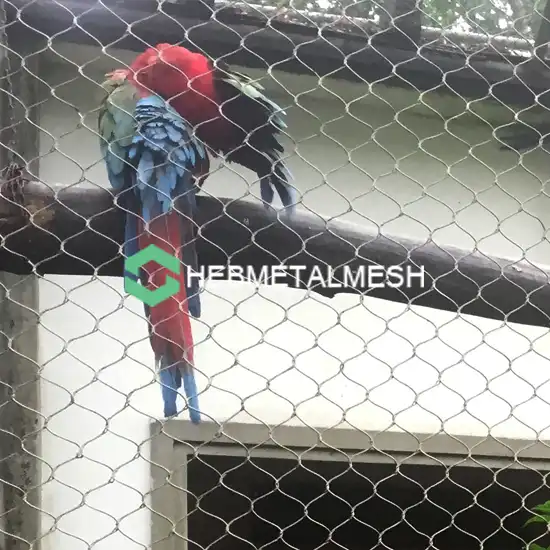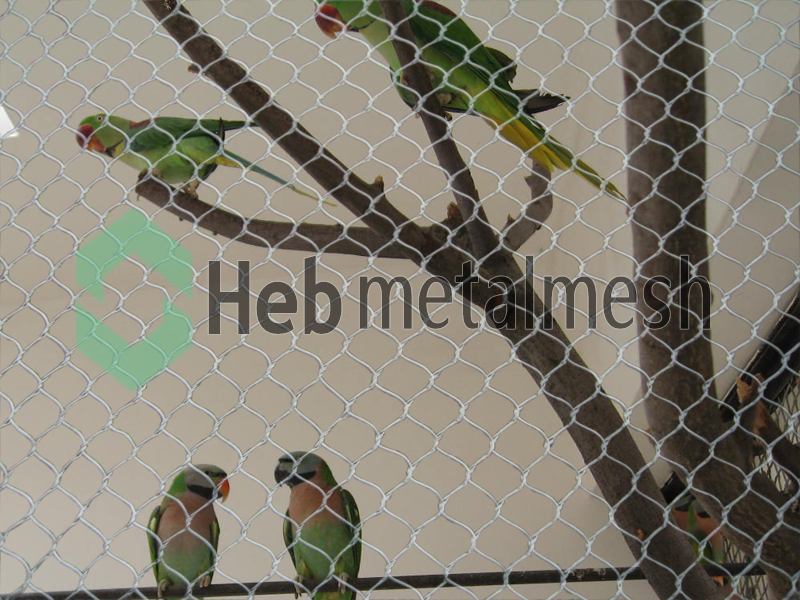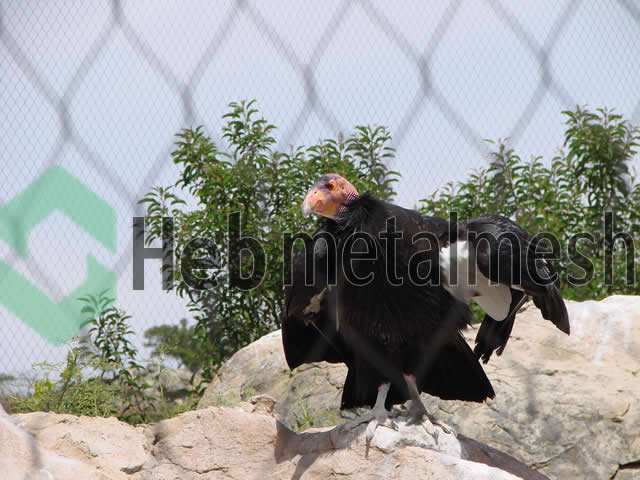Birds are magnificent creatures that inspire people all over the world. They are beautiful, graceful, and have an impressive range of abilities. That is why people put so much effort into creating environments, like aviaries, that are safe and conducive to their well-being. One of the crucial aspects of building an aviary is choosing the right type of netting. There are many different types of aviary netting available in the market, but handwoven stainless steel netting is undoubtedly the best option you can get. In this article, we will delve into the reasons why handwoven stainless steel netting from Hebmetalmesh is the best option and explore its key features, durability, and versatility.
Discover The Benefits of Hebmetalmesh’s Handwoven Stainless Steel Netting for Your Aviary.
Do you own an aviary and want to provide your birds with the best level of safety? Discover how Hebmetalmesh’s handwoven stainless steel netting can give you the ultimate protection and peace of mind.

Why Choose Handwoven Stainless Steel Netting from Hebmetalmesh for the best aviary netting?
When it comes to the safety of your birds, you want nothing but the best. Handwoven stainless steel netting from Hebmetalmesh is the solution to all your needs. It is durable, long-lasting, strong, and easy to install. Additionally, it provides excellent protection against all kinds of predators and keeps your aviary secure.
Hebmetalmesh’s aviary netting is handwoven, which means it is a product of precision and expertise. The netting process is performed by skilled craftsmen who pay attention to every detail to make sure that the threads are woven tightly. As a result, you get a perfect square mesh, which helps you to create a safe, secure, and reliable aviary that will last for a long time.
What Are The Key Features of Hebmetalmesh’s Handwoven Stainless Steel Netting?
Handwoven stainless steel netting from Hebmetalmesh has several key features that make it the best option for your aviary. Here are some of its most prominent features:
Durability: The netting is made of high-quality stainless steel, which is resistant to corrosion and can withstand harsh weather conditions. It can withstand heavy weights, making it perfect for large aviaries with different kinds of birds.
Strength: Hebmetalmesh’s aviary netting is stronger than other materials like plastic or nylon, which can degrade over time, putting your birds at risk. Stainless steel is much harder to cut or puncture, ensuring that your aviary remains secure.
Easy Installation: The handwoven netting is easy to install, requiring only basic tools and know-how. You can easily cut it to fit your aviary’s shape and attach it to the frame.
Versatility: The netting can be used for a variety of applications, including bridges, railings, and animal enclosures.
What Makes Handwoven Stainless Steel Netting so Durable?
Hebmetalmesh’s handwoven stainless steel netting is highly durable because it is made of high-quality stainless steel. Stainless steel is resistant to corrosion and does not rust, even in harsh weather conditions. The material is also resistant to impact, which makes it suitable for environments where birds can fly into the netting.
The netting is handwoven, which ensures that the threads are tightly woven, making it harder to puncture or cut. The manufacturing process also ensures that the threads are woven consistently, ensuring that the square-mesh is maintained throughout the whole netting.
Why Is Handwoven Stainless Steel Netting From Hebmetalmesh So Versatile?
There are many reasons why handwoven stainless steel netting from Hebmetalmesh is so versatile. The material can be used in a variety of applications beyond aviaries, such as for zoo enclosures, bridge fences, and more. The netting is also customizable, making it suitable for different kinds of aviaries. The netting can be designed to accommodate unique shapes, sizes, and bird species, making it suitable for a range of bird owners.
Another compelling reason why handwoven stainless steel netting from Hebmetalmesh is so versatile is that it is ideal for use in both indoor and outdoor environments. The netting is resistant to UV light, which means it can handle prolonged exposure to sunlight without degrading. It is also resistant to water, which means it can withstand rain without rusting or degrading.
Conclusion – Choose the best aviary netting from Hebmetalmesh
If you own an aviary, choosing handwoven stainless steel netting from Hebmetalmesh is the best decision you can make. The netting provides excellent protection against predators, is durable, strong, versatile, and easy to install. Hebmetalmesh’s netting is handwoven, ensuring that it is of high quality, reliable, and long-lasting. Invest in Hebmetalmesh’s handwoven stainless steel netting today, and enjoy a secure environment for your feathered friends.

